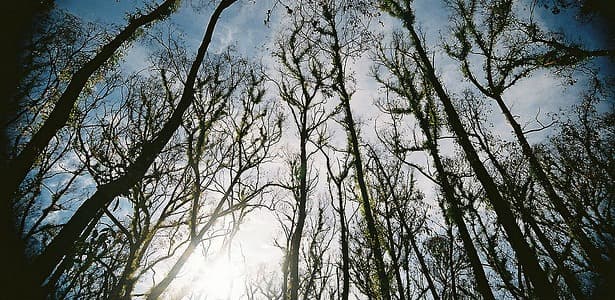A pathogen is the name given to anything that causes disease within a living host, and it roughly translates from Greek to "producer of suffering." Common types of pathogen include; bacteria, viruses and fungi. Plant pathogens, or phytopathogens (that's a neat name), can be devastating to the host population if not recognized and controlled (and that "if" is the key). It is estimated that 10-20% of the worlds plants are affected by some sort of phytopathogen each year.
A major type of tree pathogen is fungi. Most of these pathogenic fungi belong to the classes ascomycetes (sac fungi) and basidiomycetes (higher fungi). These fungi can reproduce both asexually and sexually, through the production and distribution of spores, as well as other systems. These pathogens can be controlled with specific fungicides; however, they often evolve and become resistant to these treatments over time...which leads to widespread infections.
The European ash, or common ash (Fraxinus excel sior) is a deciduous tree, found throughout most of Europe and parts of North West Asia. It can grow to heights nearing 50 meters tall, with its trunk reaching some 3.5 meters in diameter, although most are around half this size, and it is the third most common tree in Great Britain.
In 1992, in Poland, large numbers of European ash trees were found to be dying out. In the coming years, the neighboring countries were also affected. Germany, Austria, Scandinavia, and the Czech Republic were among the countries blighted by 2008. By 2012 most of Northern Europe had been hit, including France, Britain, and Ireland
With so much of Europe now affected, the fight against ash die-off is very real. If a method of halting, or even treating, the disease is not found soon, the ecological consequences could be utterly devastating. It is predicted that, as it stands, around 95% of ash trees in the UK alone will die. Not only does this threaten the ash population, many species of wildlife are also at risk of losing their habitats. These include bats, wood mice, wrens, beetles, and bullfinches. In total, around 1000 species will be affected, with 45 facing extinction if the disease cannot be halted. Of these, four lichen species, eleven fungi, and 29 invertebrates are found solely on the ash.
Fortunately, we do have some information. We now know that this mass death is being caused by the ascomycete fungus Hymenoscyphus pseudoalbidus (HP). It is thought that the disease originates from Asia, where the ash trees are completely immune to its harm. In 2012 the genome of the HP fungus was sequenced in Norwich, England, allowing scientists to further delve into its dark workings. Studies appear to have uncovered a number of pathogenic genes already.
HP grows aggressively in the Spring on fallen ash leaves. The spores produced from this growth are then spread by the wind, causing an extremely rapid infection rate. Although it can attack any form of ash tree, the disease has mainly infected the European ash as it has torn its way across Europe. However, some trees seem to have escaped the blight of HP. In the worst hit country, Poland, around 15-20% of the trees seem to be unaffected. Scientists are currently working on sequencing the genome of one resistant tree from Denmark, which has survived eight years of exposure, in order to gain an insight into its resistance mechanisms.
The symptoms of what is now known as "ash dieback" include wilting leaves, premature shedding and large bark lesions. Young plants often die within the first period of infection, whereas older trees may repel initial attacks for a few years, before eventually succumbing. There is currently no method of management, containment or treatment of ash dieback. As it stands, no infected trees can be cured of the disease. The only strategy proposed thus far is to create resistant seeds using branches from resistant trees, and re-colonise affected areas. Due to the area infected by the disease, this strategy is not one to bring about a rapid solution.
Research has uncovered a few positive revelations concerning ash dieback. HP spores only survive a few days in isolation and it is believed that ash trees need a fairly high dose of these spores to be affected. It has also been shown that the risk of spread by human or animal transport is low.
Now, new figures as of February 2015 show that the number of sites affected by ash dieback in the UK, has tripled to around 1000. With the entire country now looking to be affected. For now, the issue of halting the decimation of ash die-off is in the hands of the laboratories around the world, working fervently for a short term solution. As more time ticks by, the problem grows in magnitude. It seems now that the key to this disease, as with many others, lies in the very foundation of life itself, genetics.
Provided by FQTQ contributor Robert Langley
Share This Article
